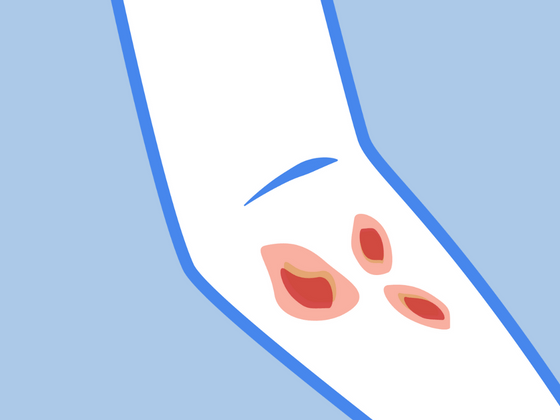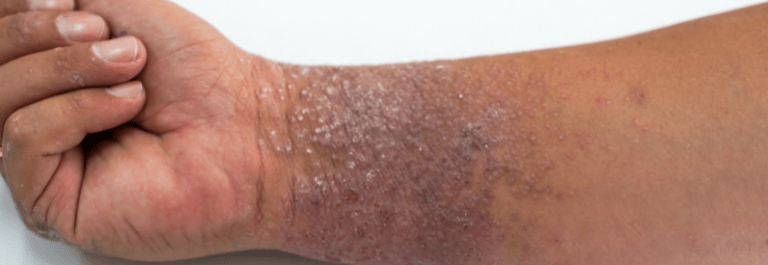Having eczema on your hands and wrists is fairly common. In fact, wrist eczema affects as many as 10% of the US population. One of the reasons why it may be so prevalent is because of the hazards that present themselves in everyday life, particularly for those who have jobs that require the use of their hands.
For example, occupational exposure can include hairdressing, cooking, catering, healthcare, housework, mechanical work, cleaning, and metalwork. Frequently washing the hands or overexposing the skin to water can also cause a reaction.
In this post, we’ll provide helpful information on eczema on the wrist and what you can do about it.
Please keep in mind that although these tips and information have worked for several sufferers, we are in no way medical professionals. If you’re experiencing severe symptoms or have a topical infection, it is always best to seek medical advice immediately.
What is Eczema on Wrist?
Eczema is an inflammatory skin condition that causes the skin to be irritated and itchy. Eczema on the wrist is usually triggered by genetics, contact allergens, and any irritating substances the skin comes into contact with. That’s why it often affects people who have a greater risk of coming into contact with chemicals and irritants such as those who work in the jobs mentioned above.
Like other forms of eczema, hand eczema isn’t contagious meaning that you can’t ‘catch’ it. It can also be triggered by allergens to jewelry such as bracelets or perhaps even by the clothes you wear.
Symptoms of Eczema on Wrist
Eczema on the wrist can make people self-conscious about their skin's appearance or affect their ability to perform their job or daily activities. It’s often accompanied by redness, itchiness, and a rash. If blisters develop or the skin cracks and bleeds, it can be quite painful or uncomfortable. Dryness, to the point of peeling and flaking, can also heighten the sense of itchiness.
Natural Remedies for Treating Eczema on Wrist
One of the most important things you can do to manage your eczema on wrist symptoms is to avoid the trigger that caused the reaction. However, we understand that this is sometimes easier said than done, especially if you’re unsure of what your triggers are. Here are some ways we recommend protecting and caring for your wrists:
Wear Protective Gloves
Wearing gloves is a great way to minimize your skin’s contact with irritating substances, especially if you work in a job that requires the frequent use of your hands. We recommend these Remedywear™ Fingerless Gloves for adults and kids. With a stretchy fit that extends just past the wrists, they allow for full use of your fingers while protecting your palms and wrists. The breathable fabric fits like a second skin and is great for wearing underneath latex or nitrile work gloves.
Keep the Skin Moisturized
Combatting itchiness and irritation becomes easier with help from a natural cream like this Baby & Adult Soother. Containing just three Chinese herbs in a base of olive oil and beeswax, it provides plenty of itch relief for conditions like eczema and psoriasis. Because it’s so gentle, it’s a safe choice for babies and adults alike.
Switch to Natural Soap
When bathing, showing, or simply washing your hands, we encourage you to use a natural soap that’s free from harsh chemicals or ingredients. We love this Tallow Bar Soap with Zinc because it’s hypoallergenic and gentle on the most sensitive skin. Using it keeps the skin moisturized while helping to reduce inflammation.
References:
https://www.healthline.com/health/rash-on-wrist
https://www.medicalnewstoday.com/articles/322196
https://nationaleczema.org/eczema/types-of-eczema/hand-eczema/

Bio: Kazandra is a contributor and content developer for The Eczema Company with a flair for creative storytelling rooted in strategy. Her comments, suggestions, and reflections are not intended to replace any medical advice. Always seek the help of a medical professional before undertaking any diet or lifestyle changes.








